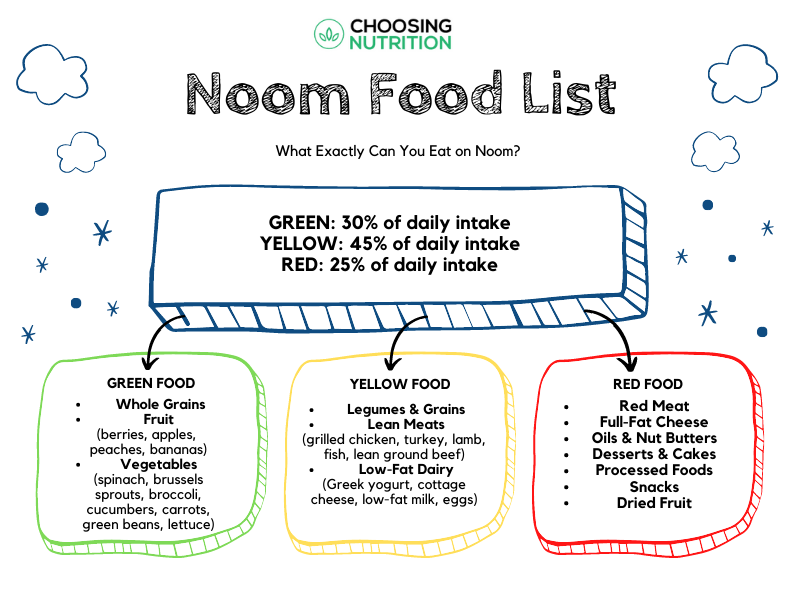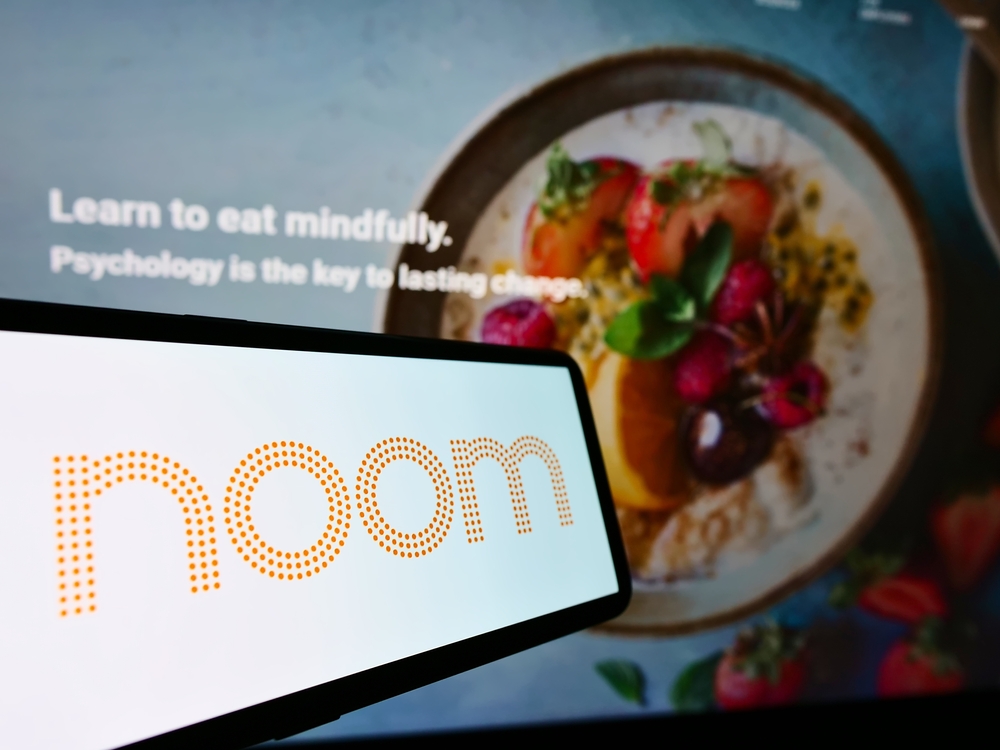You may have recently heard of Noom through their consistent advertising campaign, or perhaps you may have even heard about the service through a friend or family member. Noom is a weight loss program which aims to alter eating habits and adopt a long-term lifestyle, rather than a fad diet. But what exactly does Noom’s service include and what do the different food list colors mean?
Noom’s service includes an individualized plan based on your weight loss goals. Noom’s guide is categorized by green, yellow, and red foods. Green includes vegetables and whole grains and should be eaten in large portions, yellow includes lean meats and legumes and should be eaten in moderately, and red such as red meat and full-fat dairy should be eaten in small quantities.
In this article, we’ll discuss what the three food list colors mean, what Noom’s service entails, how much Noom costs, and whether Noom is effective. Let’s dig in!
Contents
What Do the Food Colors on Noom Mean?
The psychology-based approach Noom takes for long-term, sustainable weight-loss includes categorizing food into green, yellow, and red foods. While no foods are essentially off-limit, certain foods should be limited.

Green Foods

These are the least calorie-dense foods and have the highest amount of nutrients. Noom advocates for this making up the majority of your diet, and these should be eaten in larger portions.
30% of your daily calories should come from green foods.
Foods in this category include:
- Whole Grains (brown rice, whole grain pasta, whole grain bread, oatmeal)
- Fruit (apples, bananas, peaches, blueberries, cherries, strawberries, oranges, tomatoes)
- Vegetables (cucumbers, broccoli, carrots, green beans, potatoes, peppers, lettuce, zucchini, eggplant, spinach, brussels sprouts, beets)
Yellow Foods

These have more calories than “green” foods and contain less nutrients. These should be eaten in moderate portions.
45% of your calories should come from yellow foods.
Foods in this category include:
- Lean Meats (grilled chicken, turkey, lean ground beef, lamb, pork, fish)
- Legumes and Grains (chickpeas, black beans, peas, lentils, edamame)
- Low-Fat Dairy (Greek yogurt, cottage cheese, low-fat cheese, low fat milk, eggs)
- Dried Fruits (dried apricots, dried prunes)
- Grains (rice, pasta and noodles)
Red Foods

Red Foods include calorie-dense foods with a low amount of nutrients, as well as processed foods. These should be eaten less frequently and in smaller portions.
25% of your calories should come from red foods.
Foods in this category include:
- Red Meat
- Full-Fat Cheese (full-fat yogurt, butter, whole milk)
- Desserts (chocolate, ice cream, cake, cheesecake, cookies)
- Processed Foods (pizza, fries, salami, sausage, hot dogs, hamburgers)
- Oils & Condiments (olive oil, mayonnaise, avocado oil, coconut oil, nut butters)
- Dried Fruit (dried cranberries, dates, raisins)
- Snacks (chips, pretzels, popcorn, crackers, nuts)
How Does Noom Work?
- Once you download the Noom app, you will need to answer a questionnaire regarding your age, weight and height, eating habits, as well as activity levels and medical history.
- You will also need to complete short lessons for 4 months, which aims to educate you and provide you with tools and resources to make long-term life changes.
- The program also includes a coach who will check in with you and motivate you along the way. A personal plan will be set for you, based on your current state and weight loss goals.
- Your individualized plan will include your calorie budget per day. You will need to log your physical activity, as well as meals every day.
How Does Noom Help You Lose Weight?
Noom aims to help you make better food choices and form healthy eating habits, rather than limiting certain foods. By tracking calories and educating through informative articles, Noom’s goal is to be an interactive and sustainable weight loss program.
How Many Calories Can I Consume Per Day on Noom?
This depends on your current weight, your weight loss goals, as well as how active you are. On days which you work out or walk, you will be allowed to consume slightly more calories on those days.
Are Any Foods Restricted on Noom?
No foods are restricted on Noom. Unlike diets such as the paleo diet which forbids foods such as legumes and dairy, Noom recommends limiting certain foods, such as full-fat dairy and red meat.
Depending on how much weight you wish to lose, as well as the desired timeframe, Noom will suggest a daily calorie target. It also suggests how many of those calories should be within the green, yellow, and red categories.
How Much Does Noom Cost Per Month?
A subscription to Noom currently costs $59 per month, but it will cost less if you purchase several months at a time.
The duration of your plan depends on your individualized plan. While plans are typically 16 weeks (4 months), Noom recommends 12 months to sustain results.
Is Noom Free?
Noom is not free but Noom does offer a free one-week trial, so feel free to try it out, risk-free!
Does Noom Actually Work?
Some people have reported success with Noom. As with any dietary lifestyle changes (and diets), sticking to a new way of eating can be difficult.
Some research has been conducted, with one study finding that 78% of people lost weight on Noom. Specifically, 23% of these people lost more than 10% of their body weight. [1]
Does Noom Include Food Delivery Options?
No, Noom does not include a food delivery or prepared food. Rather, Noom’s services assists you with managing caloric intake, as well as diversifying these calories among different food groups.
Pros and Cons of Noom
Pros
- Accountability: by having to log in your food intake and activity daily, you remain accountable.
- Sustainable: the psychology behind Noom’s approach aims to form long-term healthy eating habits, rather than fad diet and quick fixes.
- No restrictions: Noom advocates for increasing or decreasing the intake of certain foods, but no foods are off-limits.
- Support: in the beginning you will have access to a coach on a one-on-basis. After several days, you will have access to a coach in a group setting. There is also a chat function during off-hours, though this is less personable.
- Educational: Noom’s plan includes mini lessons you have to complete over the course of several weeks. Rather than simply present you with a meal plan, Noom seeks to educate their members and make you truly understand why certain changes need to be made.
Cons
- Cost: at $59 per month, or just over $700 annually, this cost can be high for some. Plans begin with 16 weeks, or a $236 investment. Noom does offer a one-week free trial.
- Commitment: you have to track and log in your food and calorie intake, as well as physical activity daily. This requires commitment and doing the work every day.
- No Individualized Meal Plan: Noom provides you with some recipes and meal suggestions, but there is no individualized meal plan included.
Meal Ideas & Recipes
Breakfast
Often called the most important meal of the day, ideal breakfast foods on the Noom diet include whole foods such as fruit, oatmeal. and eggs.
- Low-fat Greek yogurt with blueberries, raspberries, cinnamon, chopped pecans, and unsweetened shredded coconut
- No sugar-added or low sugar oatmeal with bananas and berries
- Spinach and goat cheese omelet
- Whole grain toast with avocado and everything but the bagel seasoning
Lunch
To carry you throughout the day, make sure to include a wholesome lunch consisting of protein and fiber.
- Salad (your choice of spring mix/kale/spinach) with lean protein (chicken breast/shrimp/tofu), cucumbers, tomatoes, and bell peppers
- Whole-wheat wrap with chicken, hummus, and harissa
- Salmon or turkey burger with whole wheat bun
- Buddha bowl with black forbidden rice, shrimp or tofu, corn, cabbage, pickled cucumbers and onions, sesame seeds
Dinner
Think of meals you can easily enjoy with your family and loved ones! Dinner shouldn’t be a hassle, either so we’ve gathered the options below for you.
- Quinoa with tofu, edamame, bell peppers, and zucchini
- Sirloin or filet mignon (remember, in smaller portions) with mashed cauliflower and asparagus
- Shrimp pad Thai with hearts of palm noodles
- Grilled salmon with Mexican-style cauliflower rice
Snacks
- Apple or celery with peanut butter
- Baby carrots with hummus
- Low-fat Greek yogurt with berries
- Handful of nuts

